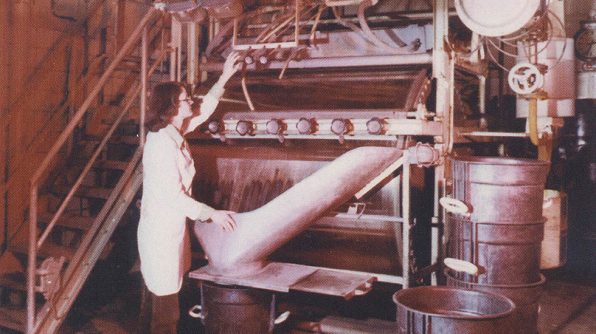Filmfabrik

Im Jahr 1909 beginnt die Aktien-Gesellschaft für Anilin-Fabrikation mit dem Bau einer Filmfabrik in Wolfen. Die saubere Luft und der Abbau des Energieträgers Braunkohle im benachbarten Bitterfeld bieten gute Ausgangsbedingungen für die Film- und Faserproduktion. Im Laufe der Jahrzehnte wächst das Werk zu gigantischer Größe heran. In der DDR steht Wolfen für Superlative: für riesige Produktionsmengen, für einen der größten (Frauen-)Arbeitgeber des Landes, für die Kultmarke ORWO („ORiginal WOlfen“) – und für eine katastrophale Umweltverschmutzung. In den 1090er Jahren scheitert die Privatisierung. Abbau, Ruinen und leere Wiesen das Gelände der Filmfabrik. Heute befindet sich in einem der wenigen noch originalgetreu erhaltenen Gebäude das Industrie- und Filmmuseum Wolfen (IFM). Besucher:innen erhalten hier interessante Einblicke in die Produktionsbedingungen des Analogfilms.
In 1909, the Aktien-Gesellschaft für Anilin-Fabrikation starts building a film factory in Wolfen. The clean air and the mining of the energy source lignite in neighboring Bitterfeld provide good starting conditions for film and fiber production. Over the decades, the company grows to gigantic size. In the GDR, Wolfen stands for superlatives: for huge production volumes, for one of the largest (female) employers in the country, for the cult brand ORWO („ORiginal WOlfen“) – and for catastrophic environmental pollution. In the 1990s, privatization fails. Dismantling, ruins and empty meadows the site of the film factory. Today, the Wolfen Industry and Film Museum (IFM) is located in one of the few buildings still faithfully preserved. Here, visitors can gain interesting insights into the production conditions of analog film.










